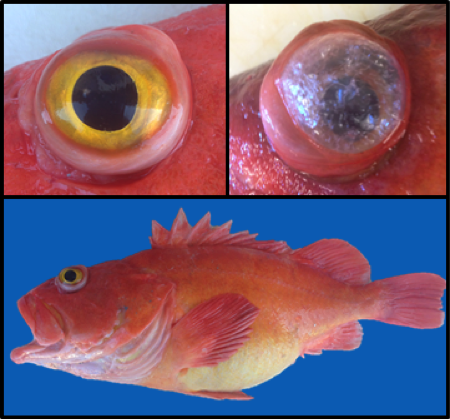The effects of underwater pressure on the body - Neosha S Kashef
604,913 Views
5,303 Questions Answered
Let’s Begin…
Why would a fish throw up its stomach? What makes a scuba diver develop painful microbubbles in their joints? Neosha S Kashef details the basics of barotrauma, shedding light on how humans and fish alike are influenced by laws of physics under the sea.
3 Open Answer Questions Dig Deeper Learn More Discuss 1 Guided Discussion &
2 Open Discussions
Additional Resources for you to Explore
Yelloweye rockfish (Sebastes ruberrimus) can live for over 100 years! This species is overfished and stocks are projected to recover slowly due to the yelloweye’s slow growth and late age of reproductive maturity (~20 yrs). Yelloweye range from Baja California to the Aleutian Islands, Alaska and live in rocky habitat from 36 to1800 ft (11- 549 m) deep.
From California to Washington, fishermen must throw back yelloweye rockfish. Catch-and-release fishing is also a common practice with many other fish species which are returned to the sea intentionally. A variety of releasing devices are available to help descend fishes properly and ensure they recompress, from a simple inverted milk crate to a pressure sensitive Seaqualizer. Learn more about rockfish recompression and descending devices from this fun educational video. Watch rockfish release in action as a fish with an everted stomach is released back home here.
True to its name, as an adult, the yelloweye rockfish has vibrant yellow eyes but as a juvenile it looks entirely different with reddish eye color, a darker red body and two bright white stripes along its sides.

The yelloweye rockfish can reach 36 inches (91 cm) in length. Top left: normal cornea with tissue swelling around the eye indicating barotrauma. Top right: crystallized eye with corneal emphysemas.
SCUBA Diver & the Bends
Rapid decompression can result in symptoms from tingling and numbness to itching and joint pain. Divers suffering from decompression sickness or the bends can be treated in a hyperbaric chamber, a sealed vessel in which pressure can be manipulated, recompressing divers to pressure at depth and slowly equilibrating them back to pressure at sea level.
When SCUBA divers reach depths greater than 100 ft (30 m) the increased nitrogen in their systems can make them feel intoxicated. Nitrogen narcosis, an altered state of consciousness often referred to as “rapture of the deep”, will influence the diver’s emotional state and impair their mental abilities.
The world record for deepest SCUBA dive is held by Ahmed Gabr who descended to 1,090 ft (332 m)! He reached record depth in 12 minutes but it took him almost 15 hours to ascend to allow for decompression.
Scientists once believed that free-diving (without a diving suit) to a depth of even 100 feet would put enough pressure on your body that one's lungs would collapse. At such depths, blood actually penetrated the cell walls of the organs to counteract the external pressure. When a diver descends to three hundred feet — a depth frequently reached by modern freedivers — vessels in the lungs engorge with blood, preventing them from collapse. Read about this phenomenon in detail here.
Want to learn a little more about overfishing’s impact on organisms like the Yelloweye rockfish? Watch this TED-Ed Select lesson: Understanding overfishing.
About TED-Ed Animations
TED-Ed Animations feature the words and ideas of educators brought to life by professional animators. Are you an educator or animator interested in creating a TED-Ed Animation? Nominate yourself here »
Meet The Creators
- Educator Neosha S Kashef
- Animator Nadav Arbel
- Artist Moran Barak
- Script Editor Emma Bryce
- Narrator Pen-Pen Chen



